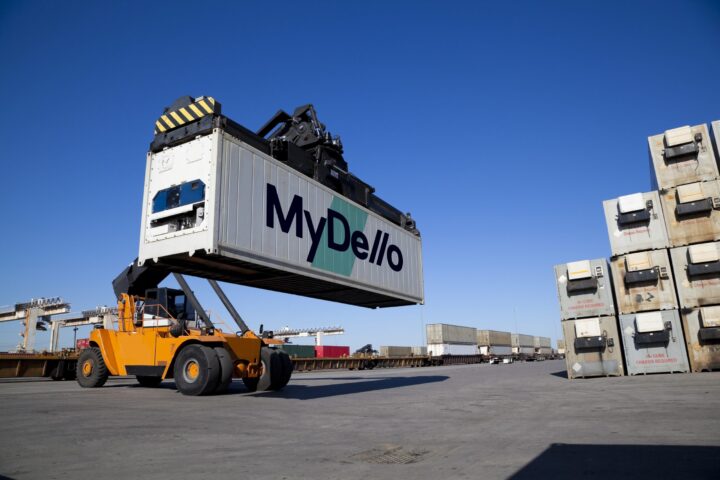The U.S. trucking workforce is aging, remains overwhelmingly male, and faces increasing challenges attracting younger drivers. This can threaten the industry’s long-term labor supply, according to new research from the American Transportation Research Institute (ATRI).
ATRI’s report highlights that the average truck driver is now 47 years old, with retirements accelerating and younger workers entering the industry at lower rates. Women represent just 4.1% of truck drivers, despite making up nearly half (47.1%) of the overall labor force in the U.S.

The report also points to growing reliance on owner-operators and independent contractors, raising concerns about driver availability for fleet operations. In February 2025, 7.1% of commercial driver’s license (CDL) holders worked for a one-truck operation, up from 6.2% in 2016. At the same time, the share of drivers employed by large fleets — those operating more than 100 trucks — has declined from 52.1% in 2016 to 46.1% in 2025. The report also notes that 54.4% of all trucking fleets now operate just a single truck, compared to 50.6% nine years ago.
ATRI says motor carriers will need to broaden recruitment strategies to include younger, more diverse candidates, including underrepresented groups such as former foster youth and justice-involved individuals, to help close workforce gaps. For example, the Bureau of Justice Statistics estimates that 60% of formerly incarcerated people do not have employment, ATRI says.
“As the trucking industry grapples with an aging workforce and continued demand for drivers, this research underscores the need to embrace evolving demographics,” said Amanda Schuier, Jetco Delivery Strategic Maintenance Director, in a related news release. “By broadening recruitment efforts, fleets can tap into new talent pools to not only strengthen driver recruitment and retention, but also address critical workforce challenges by creating sustainable pathways into trucking careers.”

While debate persists over whether the trucking industry faces a true driver shortage or not, ATRI notes that nearly all motor carriers routinely turn down revenue loads during strong markets due to a lack of drivers — a “de facto” shortage that prevails in the for-hire sector, particularly among Class 8 over-the-road (OTR) drivers.
Truck drivers moved 72.6% of the nation’s freight by weight in 2022. As of 2024, 3.58 million people are employed in truck driving roles, accounting for roughly 2.2% of the U.S. workforce.
The data reflects a shrinking share of drivers under 35. In 2008, drivers aged 35–54 made up the core of the industry workforce, but that group has since declined by 10.6%. While those under 35 increased by 2%, drivers 55 and older increased by 8.6%. Only 20.4% of truck drivers are younger than 35, compared to nearly 35% of the overall U.S. labor force.

Generation X, born between 1965 and 1980, now represents 40.8% of the truck driver workforce — the largest share by generation. Baby Boomers, born between 1946 and 1964, still account for 20.7% of the driver pool. As more of this generation retires, the industry is under increasing pressure to attract younger workers.
Millennials, born between 1981 and 1995, make up 30.7% of drivers — a significantly smaller share than their portion of the broader U.S. labor force. Meanwhile, Generation Z (born between 1996 and 2010) accounts for just 7.5% of truck drivers, despite comprising a growing percentage of working-age adults. Millennials and Gen Z combined comprised 52.6% of the total U.S. labor force in 2023. In trucking, the combined share of these two younger generations is just 38.2%.
ATRI says the lack of younger drivers is partly due to regulatory and insurance barriers. Federal law restricts individuals under 21 from driving in interstate commerce, limiting career entry points for recent high school graduates. Additionally, insurance providers often impose higher premiums or deny coverage for drivers under 25, making younger candidates less appealing to fleets.
The research calls for targeted outreach to Millennials and Gen Z, emphasizing company culture, mentorship, and career growth opportunities. ATRI suggests that carriers look beyond compensation alone, noting that 60% of younger drivers say work-life balance and supportive management are equally or more important when choosing an employer.
Decline in teen licensing shrinks pipeline for new drivers
ATRI’s report highlights another barrier to expanding the trucking workforce: fewer young people are getting their driver’s licences, limiting the pool of future CDL holders.
Early driving experience is critical for developing safe driving habits and is a prerequisite for pursuing a commercial driver’s license (CDL). But according to the report, the share of 16-year-olds without a licence has grown from 69% in the early 2000s to 75% in 2023 — a trend that reflects broader generational shifts away from early licensure.

Several states now report high rates of unlicensed adults, including New York, where 25% of individuals 16 and older do not have a licence. West Virginia reports a similar rate at 24%, while Texas and Hawaii each stand at 21%. Oklahoma is close behind at 20%. Nationally, about 14% of people over the age of 16 are unlicensed.
ATRI points to several factors driving this trend, including the growth of public transportation options in urban centers, the rising cost of insurance and vehicle ownership, and limited access to driver education programs.
Click here to access the full report detailing further findings on race demographics shift, truck drivers’ educational levels, and pathways to attract more recruits into the industry.












